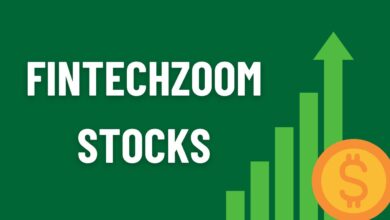Difference Between Intraday And Delivery Trading
The Indian stock market is a thriving and dynamic arena for investors and traders. In this financial hub, investors can engage in various trading strategies to grow their wealth. Two popular trading strategies that often come up in discussions are Intraday Trading and Delivery Trading. These strategies differ significantly in terms of objectives, timelines, and risk-reward profiles. In this blog, we will delve into the intricacies of Intraday and Delivery Trading, helping you understand their key differences and their suitability for different types of traders.
Intraday Trading
Intraday trading, also known as day trading, is a strategy where traders buy and sell stocks within the same trading day. The primary goal of Intraday Trading is to profit from short-term price movements. Traders look to capitalize on the volatility of stocks during the trading day, making quick buy and sell decisions to lock in profits.
Key features of Intraday Trading
Short-Term Focus: Intraday traders do not hold positions overnight. All their trades are squared off before the trading session ends.
Margin Trading: Traders often use leverage to amplify their potential gains. This allows them to control larger positions with a relatively small capital.
High Risk and Reward: Intraday trading involves higher risk due to the short holding period and the use of leverage. However, it also offers the potential for quick and substantial profits if executed correctly.
Technical Analysis: Intraday traders rely heavily on technical analysis, using charts, indicators, and patterns to make trading decisions.
Delivery Trading
Delivery trading is a more traditional and long-term approach to investing in the stock market. In this strategy, investors buy shares with the intention of holding them for an extended period, usually for weeks, months, or even years. The primary objective of delivery trading is to invest in quality stocks and benefit from long-term capital appreciation.
Key features of Delivery Trading
Long-Term Investment: Delivery traders buy stocks with the expectation of holding them for an extended period. They are not concerned with short-term price fluctuations.
No Leverage: Delivery trading does not involve leverage, which makes it a lower-risk approach compared to Intraday Trading.
Fundamental Analysis: Investors who prefer delivery trading focus on analyzing the fundamentals of the companies they invest in, such as financial statements, management quality, and growth prospects.
Lower Frequency: Delivery trading typically involves fewer transactions as investors are not actively buying and selling stocks daily.
Differences between Intraday Trading and Delivery Trading
| Aspect | Intraday Trading | Delivery Trading |
| Objective | Profit from short-term price fluctuations within the same trading day. | Focus on long-term capital appreciation. |
| Holding Period | Same trading day; positions are squared off before the market closes. | Extended period, often weeks, months, or years. |
| Risk and Reward | High risk due to leverage, with potential for quick profits and substantial losses. | Lower risk without leverage; slower but more stable long-term gains. |
| Analysis Approach | Heavily relies on technical analysis, using charts, indicators, and patterns. | Primarily uses fundamental analysis, assessing company financials, management quality, and growth prospects. |
| Transaction Frequency | High frequency, with frequent buy and sell transactions during a trading day. | Lower frequency, with fewer transactions as investments are held for a longer period. |
| Leverage | Often involves margin trading, using borrowed funds to control larger positions. | No leverage; investors use their own capital to purchase stocks. |
| Psychological Stress | Can be mentally taxing due to constant monitoring and quick decision-making. | Less psychologically demanding as positions are held for the long term. |
| Goal | Short-term gains based on price fluctuations. | Long-term wealth accumulation and capital appreciation. |
| Time Horizon | Intraday, typically within minutes to hours. | Weeks, months, or years, depending on investor preferences. |
| Suitability | Suitable for active traders with a high-risk tolerance. | Suitable for investors looking for stable, long-term growth. |
| Analysis Tools | Relies on intraday charts, indicators, and real-time price data. | Analyzes financial statements, earnings reports, and company fundamentals. |
| Tax Implications | Profits are subject to short-term capital gains tax. | Profits qualify for long-term capital gains tax benefits, which may be lower. |
Conclusion
In summary, Intraday Trading and Delivery Trading represent two distinct strategies in the Indian stock market, each with its own set of characteristics and objectives. Intraday Trading is suitable for those who are comfortable with high risk and seek quick profits by capitalizing on short-term price movements. On the other hand, Delivery Trading is a more conservative approach, best suited for long-term investors who are patient and willing to hold their investments over an extended period.
As a trader or investor in the Indian stock market, it’s essential to choose the strategy that aligns with your financial goals, risk tolerance, and trading style. Additionally, you can use various stock market apps to facilitate your trading activities. One such app to consider is “Marketwolf,” which is often hailed as the best intraday app and a reliable equity trading application. Marketwolf is a fast trading app, making it a valuable tool for both Intraday and Delivery traders.



